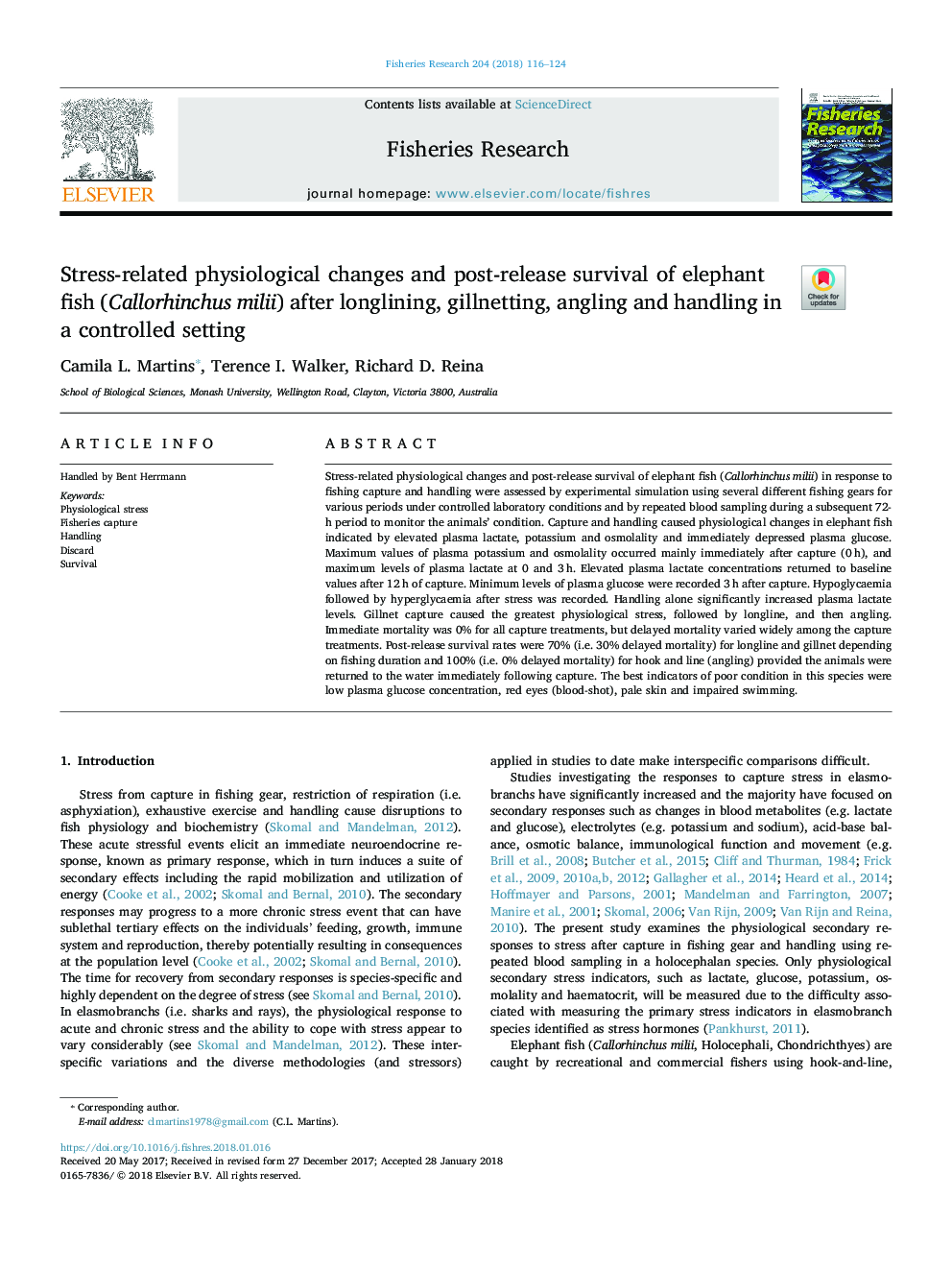| Article ID | Journal | Published Year | Pages | File Type |
|---|---|---|---|---|
| 8885361 | Fisheries Research | 2018 | 9 Pages |
Abstract
Stress-related physiological changes and post-release survival of elephant fish (Callorhinchus milii) in response to fishing capture and handling were assessed by experimental simulation using several different fishing gears for various periods under controlled laboratory conditions and by repeated blood sampling during a subsequent 72-h period to monitor the animals' condition. Capture and handling caused physiological changes in elephant fish indicated by elevated plasma lactate, potassium and osmolality and immediately depressed plasma glucose. Maximum values of plasma potassium and osmolality occurred mainly immediately after capture (0â¯h), and maximum levels of plasma lactate at 0 and 3â¯h. Elevated plasma lactate concentrations returned to baseline values after 12â¯h of capture. Minimum levels of plasma glucose were recorded 3â¯h after capture. Hypoglycaemia followed by hyperglycaemia after stress was recorded. Handling alone significantly increased plasma lactate levels. Gillnet capture caused the greatest physiological stress, followed by longline, and then angling. Immediate mortality was 0% for all capture treatments, but delayed mortality varied widely among the capture treatments. Post-release survival rates were 70% (i.e. 30% delayed mortality) for longline and gillnet depending on fishing duration and 100% (i.e. 0% delayed mortality) for hook and line (angling) provided the animals were returned to the water immediately following capture. The best indicators of poor condition in this species were low plasma glucose concentration, red eyes (blood-shot), pale skin and impaired swimming.
Related Topics
Life Sciences
Agricultural and Biological Sciences
Aquatic Science
Authors
Camila L. Martins, Terence I. Walker, Richard D. Reina,
